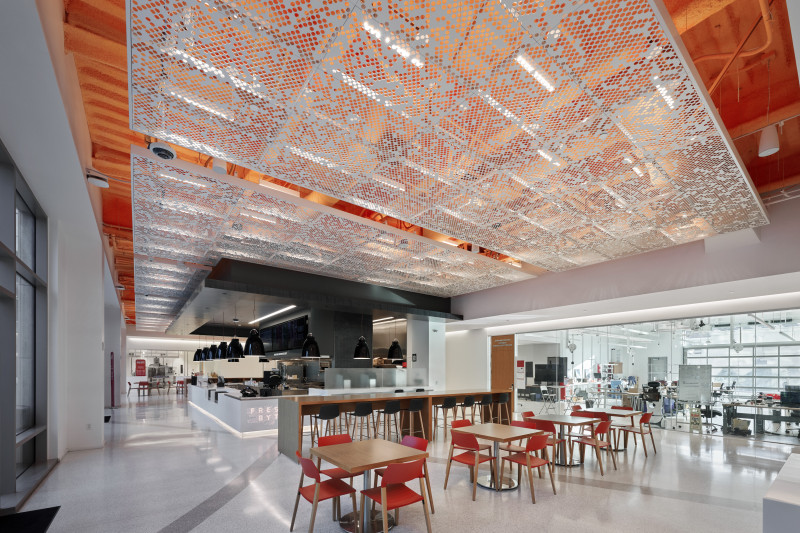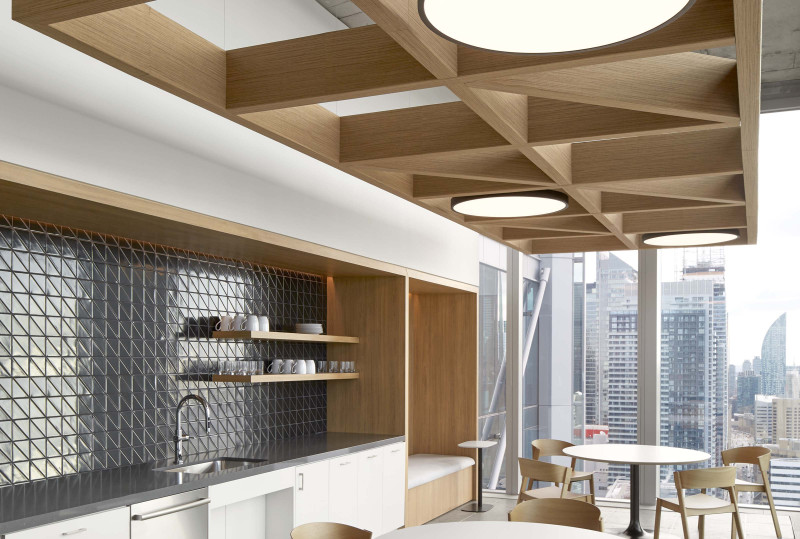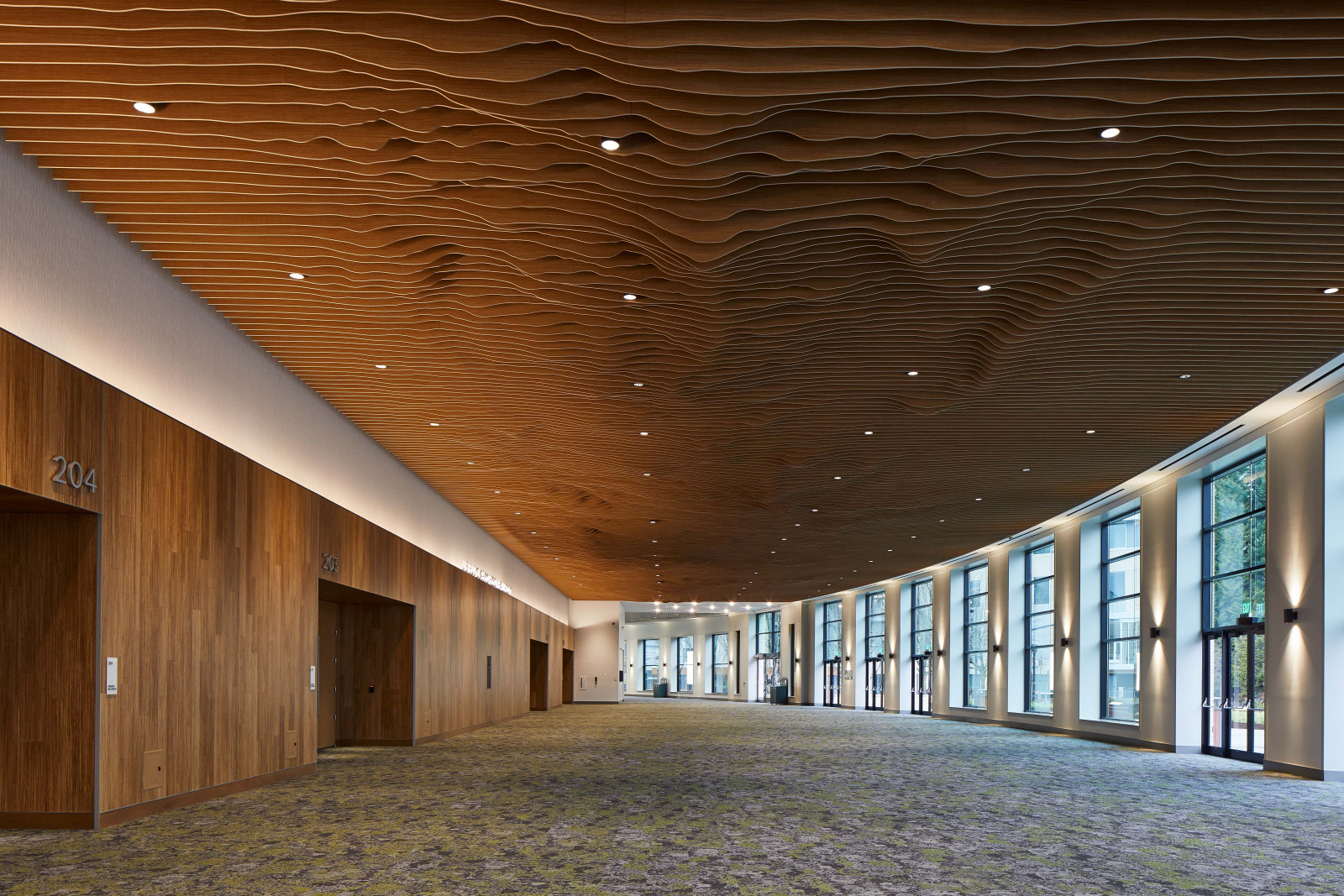Lighting is more than just what you see or don’t see when you enter a room. Lighting Design and FF&E (Furniture, Fixtures, and Equipment) design of practical fixtures influence what is visible and how we perceive it ambiently. This is even more significant in commercial settings such as retail, offices, or hospitality.
A warmly lit restaurant may result in patrons finding their dinner more romantic, or an office where the perfect balance of lumens and color temperature prevents overstress of its employees, leading to increased productivity. In 2023 and beyond, commercial builders are not only focused on the type of lighting provided but specifying lighting in a sustainable and environmentally friendly way for the project and the planet.
More and more consumers are aware of the impact of products and companies on the environment. They are now opting to do business with companies that prioritize sustainability. This has led businesses to realize the significance of adopting sustainable practices.
The future of commercial lighting is marrying sustainability concepts with the benefits that light provides to all inhabitants, clients, and staff alike. Before diving into the future of commercial lighting, it is essential to take a step back and look at what commercial lighting standards were before this drive toward a more sustainable future.
Lighting Over the Years – Incandescent and Fluorescent

“SCU Sobrato” Santa Clara, CA, ZGF Architects. Photo courtesy of Armstrong Ceiling Solutions.
Over the last few decades, modern commercial buildings utilized incandescent or fluorescent lighting to illuminate interior and exterior spaces. These were often the most cost-effective yet high-wattage solutions at the time. Unfortunately, most of these bulbs’ power is emitted in heat rather than visible light. These bulbs typically last about 1,000 hours, meaning they must be replaced often, further adding to the negative impact of the built environment’s waste and the planet.
Overhead lighting from fluorescent bulbs commonly found in office floors has a longer lifespan, at about 20,000 hours per bulb. According to Stouch Lighting, “Roughly 15% of the emissions are lost due to energy dissipation and heat.”
With almost all fluorescent bulbs, including tube lighting, there are significant drawbacks to both efficiency and sustainability. Commercial fluorescent tubes offer limited form factors and lifespans. Because these bulbs contain mercury, they are considered hazardous waste in some states and must be disposed of in a proper household hazardous waste disposal facility.
LED Revolution

“1900 Gallows Road” Vienna, VA, WDG Architects. Photo by Ron Blunt.
Thanks to more significant global trends, more commercial projects are developing with sustainability and the environment in mind. This focus on the health of our planet extends to the kind of lighting utilized in new buildings and retrofitting existing structures to be more efficient. From installing LED tube lights in existing commercial fixtures to installing integrated LED lighting sources, the future of lighting is green.
There are also additional benefits for businesses to turn to eco-lighting. These modern lights last longer, offer improved lighting quality, require replacements less often, and decrease energy costs, saving more money in the long term. This drives a high return on investment, coupled with energy-efficient lighting emitting fewer greenhouse gases, especially when paired with controls like dimmers and timers.
LED dimmers are a great way to use less power and reduce energy consumption. These lighting controls are an easy way to put control of your energy consumption back in your hands. Ensuring you have an efficient LED Driver for your commercial lights is also crucial. Drivers are power supplies that match the electrical output needed to power your lights efficiently. The right LED driver will lead to energy and cost savings, the longevity of your LED fixtures, and lower maintenance costs.
The final key to proper lighting is knowing which lighting fixture to use for a specific space. Not all areas need to be lit up by overhead lighting. Sometimes wall sconces and task lighting provide the necessary lighting without overpowering a room with illumination. These guidelines are more pragmatic than practical. At the end of the day, lighting design remains the number one driver of lighting choice selection.
Lighting & Wellness

“Mayo Clinic” Rochester, MN, BWBR Architects. Photo by Brandon Stengel.
Moreso than just saving on your monthly energy bill, having the correct type of lighting for your business has proven to positively affect the health of its inhabitants. As mentioned, bright lights can overwhelm employees, increasing stress and lessening productivity.
While natural light from the sun benefits employee productivity, if windows and sunlight options are limited, cooler lighting is a great alternative. This mood-altering capability is vital in environments such as healthcare, where quality lighting can impact patient care and health. According to Signify, “Lighting can improve the mood and perception of staff and patients. Conversely, poor lighting can hinder the way people work, learn, and heal by causing distraction, discomfort, and fatigue.”
One of the best and easiest ways to light a commercial space while reducing energy use is to utilize one of our most abundant sources of natural light, the sun. By creating buildings with large windows, courtyards, atriums, and skylights, architects can bring in natural sunlight during the day, cutting back on artificial light. This natural alternative is also beneficial to employee and customer wellbeing and healthcare.
Green Accreditation

“Accenture” New York, NY, HOK. Photo by Eric Laignel.
Creating specific goals and certifications for environmentally friendly new buildings also increases the volume of sustainable projects. These designations build consumer confidence in a company and make that company appear to be more ecologically conscious, leading to a better brand reputation.
One of the major credentials a build can apply for is LEED certification. Leadership in Energy and Environmental Design (LEED) is a global accreditation for building design, construction, operation, and maintenance, which aims to help owners and operators be environmentally responsible and use resources efficiently.
Another way to achieve a similar ecological preservation level is through sustainable eco-building. From the beginning stages, designing a space with plentiful natural light, tall windows, and sustainable materials goes a long way in developing an environmentally friendly build.
Lighting and Acoustics at Arktura

“Index Exchange” Toronto, ON, Gensler. Photo by A-Frame Studio.
Wellness extends to the building’s inhabitants once inside the building as well. Aside from powerful lighting, another peril to employee productivity is excess noise. Arktura now offers a growing collection of acoustic products with lighting capability to fix two problems with one great product.
Acoustic systems like SoundBar® provide linear baffles made of acoustic attenuating material that can fit in many commercial spaces, from restaurants to offices. With the addition of lighting in both up and down directions, use LED illumination while controlling excess noise. SoftSpan® brings a more quadratic form factor to acoustics, with a grid-like structure offered in premium finishes like wood texture, bringing a more biophilic touch to your next project. The center of these baffle’s grid systems can be outfitted with a panel lighting system to provide proper lighting and sound control.
At Arktura, we are constantly working on improving efficiency across all our lighting products. From our integrated lighting options in acoustic baffles and perforated wall panel systems, efficiency drives our innovation. Additionally, we are improving our compatibility with most lighting protocols and advanced control systems. We are also expanding our lighting options to add high CRI LEDs as standard, more color temperatures, and dynamic color control options. Finally, we are expanding our fixture designs that integrate Arktura’s acoustic products to offer more design options for our customers.






